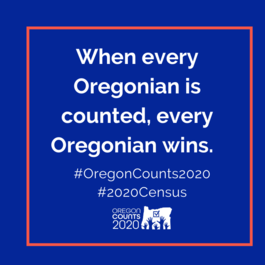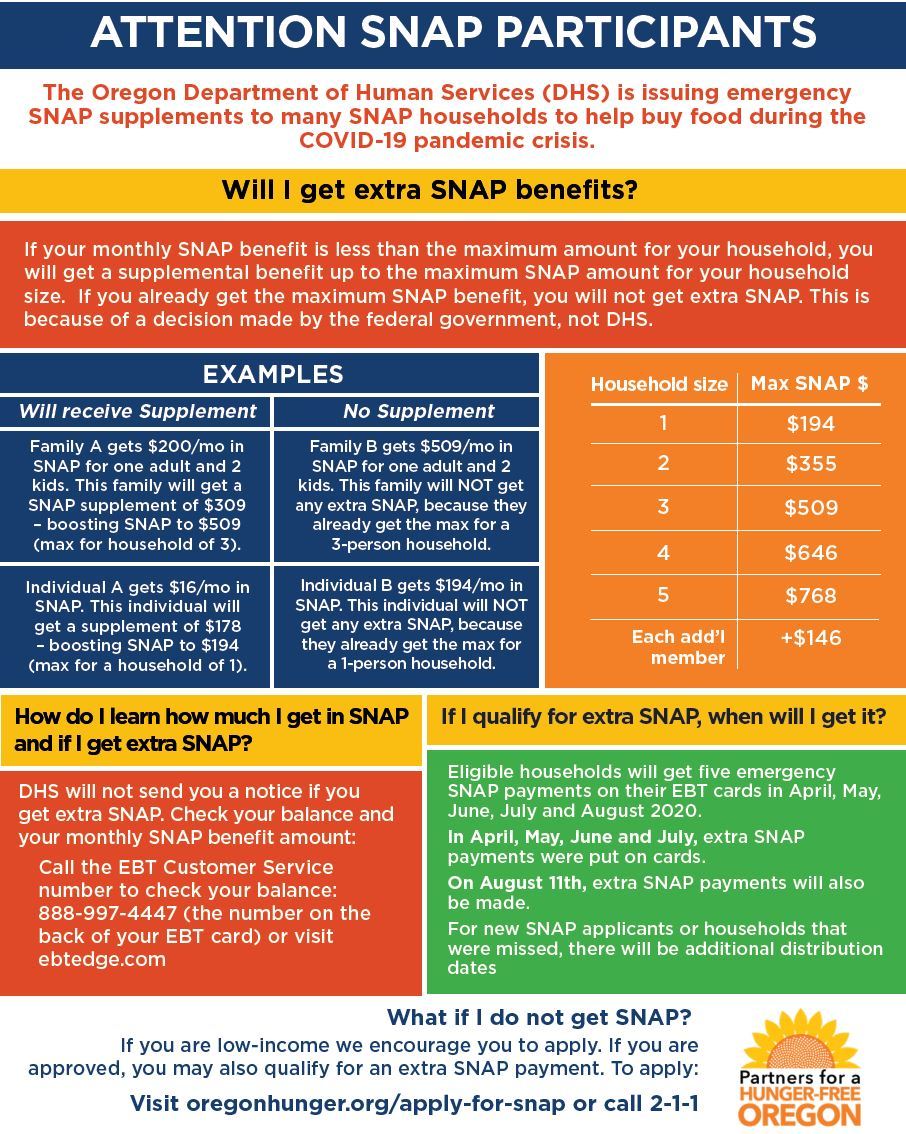|
Dear Friends and Neighbors,
It has been a beautiful week in Western Washington County. It is hard to believe that the Second Special Session was only four days ago, and we are gearing up for an Emergency Board meeting on Monday at 1pm. Legislative work really never ends! There is some good news this week, our daily case counts have declined somewhat, and our test positivity rate has declined from 6.3% to 5.4%. This really demonstrates that our mask wearing and social distancing is paying off, so keep it up!
Beautiful Oregon! Took these photos on a recent outing, so much beauty to appreciate nearby!

-
2020 Census, Get Counted! You may have heard that the Census bureau will be closing their data collection earlier than planned, on September 30th. A complete count is vital to make sure Oregonians get all the federal funding and representation we deserve. If you have not yet completed the census, there are lots of ways to do so! It only takes 10 minutes to ensure that Oregon gets fair representation for the next 10 years! If you have friends or family in hard to count circumstances, like RVs, nursing homes, congregate living, rental homes, please share these resources to be sure we all get counted! There are no citizenship questions on the census, and it is available in multiple languages. You can complete the census online, by phone, or by mail. More information can also be found at Oregon2020Census.gov or 2020Census.gov.
|
-
Construction and Delays on the I-5 Bridge: Crews are preparing now for the closure of the northbound span of the I-5 Interstate Bridge September 12–20, 2020, when they will replace mechanical parts that help lift and lower the bridge. There will be lane closure in August as well, starting Monday. Travelers will experience impacts as crews begin to build the support system under the bridge's lift span, prepare the median of I-5 for crossover traffic in September, and install signage. There will be nighttime lane closures Monday, Aug. 17 through Thursday, Aug. 20 on I-5 at the Interstate Bridge in Washington and Oregon. Find out more about Travel Strategies Here.
-
The Legislative Emergency Board will meet Monday to vote on a proposal to allocate more funds to local governments for personal protective equipment. This agenda is subject to change, and more items may be added. You can watch the committee live or after the fact by visiting the committee webpage.
-
Dental Care Available: A dental van from Medical Teams International comes to Holy Trinity Parish on the first Friday of each month. Appointments begin at 9:00AM and walk-ins are welcomed starting at 10:00am. If you or someone you know has a dental problem but does not have private dental insurance, feel free to access this service. To schedule an appointment or request additional information contact 503.641.1842 OR send an Email to communityoutreach@h-t.org. (Thanks to David from Hillsboro for sharing this resource!)
- Medical Teams International Dental Van
- First Friday of the month starting August 7th
- Holy Trinity Parish, 13715 SW WALKER ROAD, BEAVERTON, OR 97005-1017
-
Emergency SNAP supplemental allotments will continue in August, which means all SNAP recipients will receive the maximum amount for their household size. These emergency SNAP benefits will be distributed on August 11th and additionally at the end of the month for those that were missed in the first distribution or new applicants. Updated materials in many languages (English, Spanish, Arabic, Russian, Somali, Simple and Traditional Chinese, and Vietnamese) can be found at https://oregonhunger.org/covid-19/.

- Confirmed Cases: 5,228,817 (up 52,799 from yesterday)
- Deaths: 166,317 (up 1,169 from yesterday)
- These national numbers come from the Centers for Disease Control and Prevention. You can view their national and state by state data here.
-
Oregon Status Report: Oregon now has 22,613 total cases (confirmed and presumptive) of COVID-19.
- Today we have 323 new confirmed and presumptive cases, and 2 new deaths.
- Thursday: 294 cases, 8 deaths
- Wednesday: 258 cases, 7 deaths
- A total of 385 Oregonians have died from COVID-19.
-
Washington County still has one of the highest case counts at 3,258 confirmed cases, including 25 new cases today. You can review on-going updates from OHA by clicking on the table below.
- The Oregon Health Authority recently provided a Public Health Indicators Dashboard to enable communities across Oregon to monitor COVID-19 in the state.The dashboard, which will be updated weekly on Thursdays, provides a transparent report that presents complex epidemiological data in an interactive, easy-to-understand way on a state and county level.
-
OHSU’s Study on the prevalence of COVID-19 in Oregon has determined that COVID exposure in the Spring and early Summer was higher than conventional testing suggested. Their study of 889 Oregonians found that 1% of participants had COVID-19 antibodies, suggesting that as of mid-June about 1% of Oregonians had been infected by COVID-19, even if they had no symptoms. This rate is 10 times higher than what conventional testing suggested. Read more about the preliminary results of this study here.
Table showing Oregon case, testing and demographic data, link to more information
Testing Updates:
We are continuing to complete about 48,000 tests per week, but supply chain difficulties continue to make it difficult to scale up testing or reduce turnaround time for tests.
Oregon prioritizes testing of people without COVID-19 symptoms by:
- People who have had close contact with people who have confirmed or presumptive COVID-19.
- People exposed to COVID-19 in congregate settings (e.g., residential care facilities, group homes, schools, agricultural workplaces, food processing plants, jails or prisons, and shelters).
- Migrant and seasonal agricultural workers upon arrival in Oregon.
- People who identify as Black, African-American, Latino, Latina, Latinx, American Indian/Alaska Native, Asian, Asian-American, or Pacific Islander.
- People who identify as having a disability.
- People whose first language is not English.
Click on this table to view the full weekly testing report
Stay Safe While Dining
If you are thinking of eating out this weekend, remember to stay safe! Wear your mask when you aren’t eating, especially if your dining partner doesn’t live with you. Raise your mask when the server approaches your table. Wash your hands often. Choose outside dining when possible.
IEPs and Distance Learning:
Parents of children with IEPs and individualized learning needs are likely wondering what this fall is going to look like for their students. Some of this will vary district to district, so you should contact your district to understand what their plan is for IEP learners is for distance, hybrid and in-person learning. While many aspects are district specific, FACT Oregon, has compiled several resources for parents and families. You can find their COVID-19 resources here.
The IEP: What you need to know
Getting Ready for Distance Learning:
Since many districts will be starting out the year with distance learning, we need to consider what students will need to be most effective in distance learning environments. Recent studies have shown that one of the key factors in successful distance learning is for students to have access to a quiet place to study. This presents an equity challenge for Oregon schools, as children from less advantaged backgrounds are less likely to have their own space, and children everywhere may be coping with siblings, parents and other household members who are also studying or working from home. As we prepare to have truly comprehensive distance learning this fall, we will need to consider how to adapt our homes to meet the needs of our students, and find ways to address the inequities of space and quiet that exist. Read more from the National Center for Education and the Economy.
Disparities in access to quiet study spaces
School Reopening Updates:
This week, the Oregon Department of Education released updated guidance for Ready Schools, Safe Learners, including more detailed standards for comprehensive distance learning. Distance learning this fall will be very different from the spring, with much more requirements for daily attendance, grading and more. You can see more detail on the Ready Schools, Safe Learners page. School District plans are due next week, but some have already uploaded their plans, you can see the full list of district plans here.
Requirement for Comprehensive Distance Learning
Return to Play: Oregon Health Authority has recently released guidance for k-12 sports for the fall. You can read the full guidance here. The guidance applies to K-12 school sports practice, training and play for specified sports in counties statewide. K-12 school sports are approved to operate based on Oregon Department of Education (ODE) school reopening plans.
Schools participating in distance learning may only allow their school sports teams to participate in:
- Training, conditioning and competition for outdoor non-contact and minimal/medium contact sports.
- Training and conditioning for outdoor full-contact sports.
- Training and conditioning for all indoor sports.
Training and conditioning, such as weightlifting, running drills and intra-squad scrimmaging, cannot include full contact of any kind.
Schools offering some version of in-person learning may allow their school sports teams to participate in any indoor and outdoor non-contact and minimal/medium contact sports.
The Science of Reopening: This week, my colleague Senator Dembrow shared some scientific studies that are very informative for our understanding of reopening decisions, which I have included below. It is important to me and to our whole community that our reopening decisions, for schools business and gatherings are based in the best available science. The National Academy of Sciences has been organizing and sharing a series of covid-related webinars, the most recent of which is on the science of school reopening that was held yesterday. It featured Dr. Wendy Armstrong of Emory University, Dr. Caitlin Rivers of the Johns Hopkins University, Donna Mazyck (Executive Director of the National Association of School Nurses), and Dorte Lange of the Danish Union of Teachers. Here are some important takeaways:
- Despite earlier thinking that children were not affected by the virus, we now know that that is not the case. The U.S. has had 380,000 cases in young children and teenagers, 180,000 in the last four weeks alone. As of August 6, 9.1% of all COVID cases have been children and teens. Children and teens comprise 22% of the U.S. population.
- Children are less likely than adults to have severe consequences: less than 3% of the cases have led to hospitalization, less than 1% to death.
- There is growing evidence that young children are much less susceptible to the disease than are older children. Age ten seems to be the point of demarcation.
-
A new epidemiological study from Geneva reported in The Lancet showed little difference in risk between children aged 10-18 and adults; however, younger children (age 5-9) were 1/3 as likely to be infected.
- Those findings confirm the evidence in an earlier study of 22,000 residents in Iceland, which showed that children under the age of 10 are half as likely to be infected than teens. (You can find this study in The New England Journal of Medicine.)
- Recently-released statistics from South Korea showing the results of contact tracing of 59,000 individuals reveals (a) that transmission from household members is 5-times higher than from non-household members; and (b) the group most likely to be infecting other household members are teens. Children under the age of 10 are far less likely to be what’s known as the “index patient,” i.e., the source of the disease.
-
A recent study in The Journal of the American Medical Association suggests that school closures in the spring may have played a significant role in temporarily containing the spread of the disease.
- There is increasingly clear evidence that children are infectious, especially when they are symptomatic.
- School reopening plans need to be tied to the state of community spread in the region.
- The CDC has not issued recommendations for in-person reopening metrics. Some academic medical associations have. Based on those recommendations, Oregon’s new reopening metrics seem to be in line with the preferred standards; Oregon’s new rural/remote standards are in line with those considered acceptable.
Higher Education:
On Tuesday, I focussed on the K-12 education aspects of the budget rebalance. Today, I thought I would highlight some of the budget decisions made for higher education, and some other important updates for return to colleges and universities. Like in the k-12 budget our focus for higher education was on maintaining core programs and services and keeping tuition costs steady. To accomplish this we had two main takeaways:
- The basic support funds for community colleges and universities, the Community College Support Fund and the Public University Support Fund are protected.
- Total funding for the Oregon Opportunity Grant program, the largest state-funded, need-based grant program for college students, is maintained.
Earlier this week, the Director of the Higher Education Coordinating Commission, Ben Cannon, and representatives from Oregon Health Authority held a Q&A about re-opening for colleges and universities. Click the image below to watch that Q&A.
Q&A on Higher Ed Reopening

Coronavirus Relief Fund Cultural Support Application Now Live
Applications are now live and open for Oregon’s Coronavirus Relief Fund (CRF) Cultural Support program. Funds allocated to the Oregon Cultural Trust will be available to Oregon cultural organizations facing losses due to the COVID-19 health crisis. The $25.9 million in funding was made available through a $50 million relief package for Oregon culture recently approved by the Emergency Board of the Oregon Legislature.
Find complete guidelines and more information here.
|
|
Small businesses in the City of Hillsboro can apply to receive up to $3,500 in emergency grant funding during a third round of applications next week.
The application process will be open from Tuesday, August 18, at 9 am through Wednesday, August 19, at 4 pm on the City’s COVID-19 Business Resources webpage.
The emergency support will help offset some of the financial impacts of the COVID-19 pandemic.
Lea esta noticia en español.
|
|
 |

Employers and Employees
Education Links
Local Government
Utilities Assistance
Food and Housing Assistance
View Past Updates, Share and Subscribe:
If there was COVID-related information in a past newsletter that you want to go back to, but find you’ve deleted it, you can always go to my legislative website (http://www.oregonlegislature.gov/mclain), click on “News and Information,” and you’ll find them all there. You can also share this site with your friends and loved ones, so they can view past newsletters, and subscribe to future updates.
Keep Masking Up, Oregon! It’s working and we need to keep it going!
Yours truly,
 Representative Susan McLain
House District 29
email: Rep.SusanMcLain@oregonlegislature.gov I phone: 503-986-1429
address: 900 Court St NE, H-376, Salem, OR 97301
website: http://www.oregonlegislature.gov/mclain
|